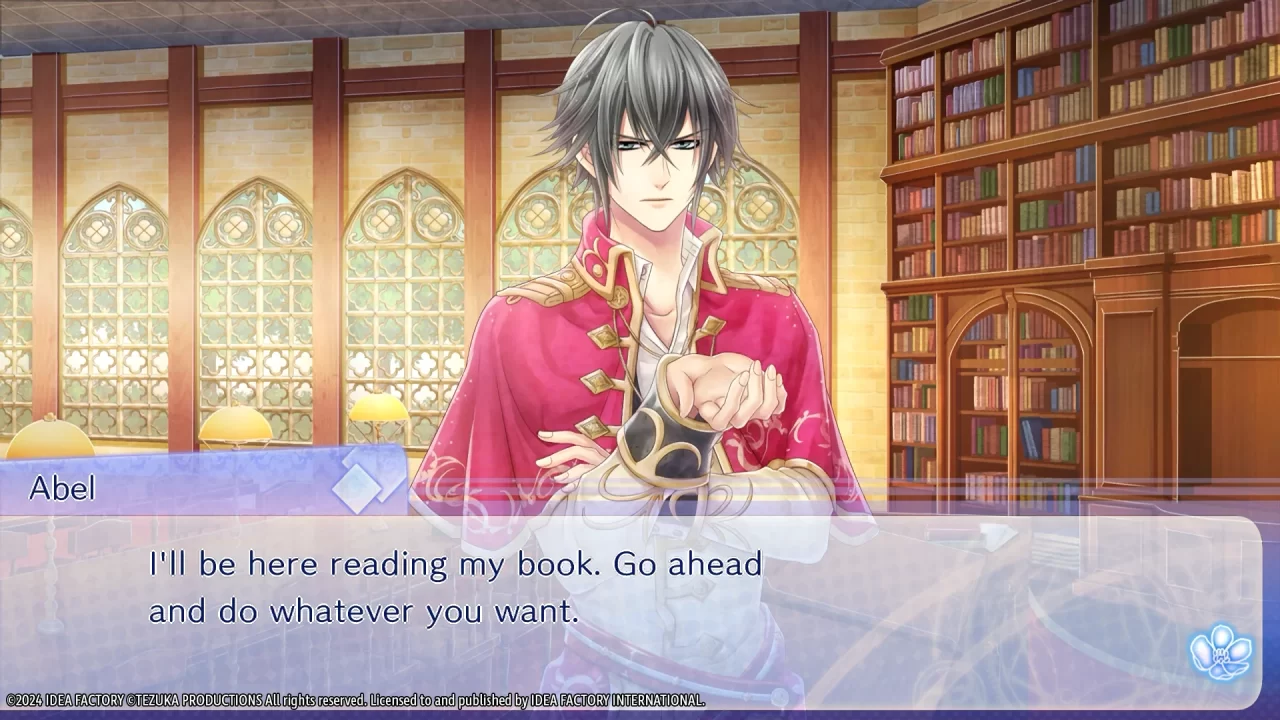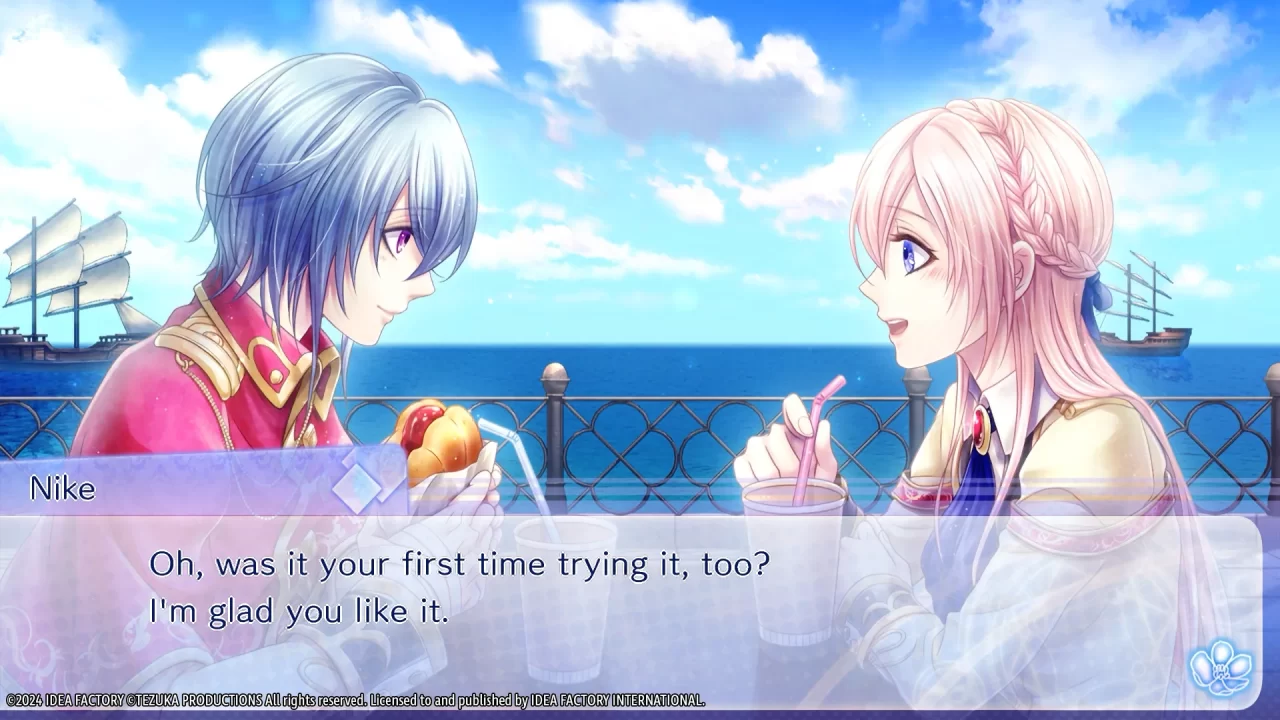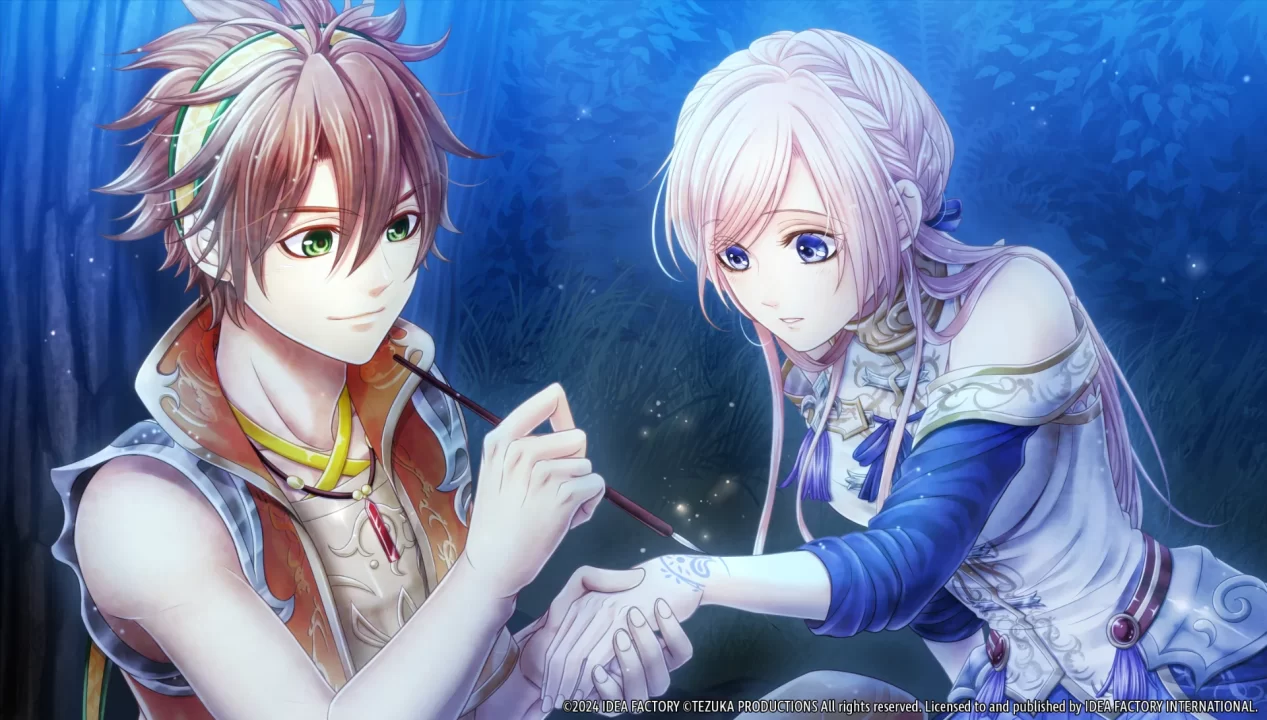Otome visual novel Battlefield Waltz originally released in Japan on the PlayStation Vita in 2014, with its more recent Nintendo Switch port serving as its English localization debut. While the game’s storyline revolving around an elite military school isn’t the most original fantasy yarn, the characters are memorable and surprisingly compelling. Meanwhile, astonishing story beats that build upon one another, often going in unanticipated directions, more than make up for the unoriginal setting. I enjoyed this VN so much that it’s one of my favorite otome releases this year. Given its lengthy common route, it requires patience, but Battlefield Waltz inevitably proves to be worth the wait for its localization.
Battlefield Waltz‘s main character is a young woman named Lan. She lives in a relatively secluded and peaceful village with her mother and father, only to have her life instantly change the day a neighboring village attacks without warning. The attack resulted in countless casualties, Lan’s father among them. She, her mother, and a young neighbor girl flee into the forest, where two of the attackers close in on them, and Lan desperately wishes she had the power to protect everyone. Her earnest wish breaks the seal on a mythic cursed sword housing the soul of a boisterous child named Wilhelm, becoming symbiotically attached to her person.
Since the cursed sword’s destructive power is too massive to be left unchecked and there’s no way to sever the magic bond between herself and Wilhelm, Lan must go to a prestigious military school called Nirvana in the kingdom’s capital. While she struggles to master the cursed sword’s abilities to unleash its true potential for good, nefarious forces are hellbent on acquiring the cursed sword for calamitous reasons as the threat of war looms. Suddenly bereft of all she knew and thrust into a mind-boggling situation, will Lan find the strength to survive the ordeals that await her and hopefully discover where she truly belongs?
The storyline’s premise is intriguing, and its initial setup pulls you in nicely. I wish there was more focus on the fantastical political machinations and overall worldbuilding around Lan and the cursed sword during the title’s lengthy common route instead of the typical high school setting story we generally get. The narrative only occasionally throws you a few bones to remind you there’s more to the plot than just school shenanigans. Fortunately, the characters’ routes delve more into the fantastical thanks to scenario writer Yuma Katagiri (also known for Olympia Soirée and Tengoku Struggle: Strayside). Still, it doesn’t help Battlefield Waltz that the initial common route is extremely lengthy because I could easily imagine someone losing interest around the halfway point. As for the text itself, the English localization is solid, though I did notice the occasional typographical error.
Fortunately, Battlefield Waltz contains an extensively robust story map called Chronicle for replayability purposes and collecting endings. Since the game doesn’t explain how to navigate Chronicle, it can be intimidating to figure out at first. But once you learn the ins and outs and how to skip ahead, it becomes clear how helpful it is in alleviating some of the pain of replaying the common route in subsequent playthroughs. Once I collected all character affection levels and decision plot flags for the common route chapters, it was easy to use Chronicle to quickly progress to my chosen character’s route. You just select said character and your ending route preferences, jumping into the last story scene of the final common route chapter.
As an otome title, romance is a significant focus of Battlefield Waltz. Initially, three character routes are available: the diligent yet socially awkward swordsman Abel, the flirtatious Lustin, and the stubborn-minded Pash. Playing through these routes eventually unlocks two more, those of the handsome and enigmatic mage Tifalet and the gentle medic-in-training Nike. Getting the “happy” endings to all five routes unlocks a story mode called Ancient Memories on the game’s main menu, and accessing the available short stories within reveals a “hidden” character route. However, it might be pretty obvious who the secret love interest is thanks to Chronicle and the affection meter screen during a playthrough. While I felt some of the routes were more impactful than others on a personal level, I honestly didn’t have much issue with any of them. Battlefield Waltz‘s romance subplots show nice development without anything questionable or bizarre. Abel and Nike were probably my favorites of the bunch, but all of Lan’s respective love interests had their positive moments.
That sentiment is also true for how all of Battlefield Waltz‘s characters, the love interests and the supporting cast alike, develop in every route. Some characters appear for a minor role in one love interest’s story but are exceedingly prominent in another’s. Or they will appear one way given story developments in one route only to reveal a different facet of their personality or back story in another. Every person in Battlefield Waltz‘s extensive cast was written believably and with surprising depth. Not only can you interact with the LIs during exploration segments in the common route to raise affection, but you can also visit the supporting characters to learn about their personal lives, allowing particular later plot reveals involving them to have more impact or “oh, that’s why they did that!” epiphany moments. Out of the side characters, the familial bond between jovial tavern owner Ghido and his shy teenaged daughter Collette, the observant and wry commentary from the consistently excellent Xiaolei, the thoughtful mannerisms of fellow Nirvana student Asaka, and the way everyone hero-worships the peaceful and kindhearted Queen Qiora are personal highlights. The cast grows on you and is the true heart and soul of Battlefield Waltz. Lan doesn’t have the most assertive personality compared to other otome protagonists. Still, her search for belonging is relatable enough, and her quiet stubbornness is narratively a boon and weakness in equal measure.
Aside from the Chronicle story map reliance, the gameplay in Battlefield Waltz is typical of most visual novels as you cycle through screens of text and make decisions. Said decisions often raise characters’ affection towards Lan or “flags” vital plot progression points. You need a high level of affection with a character and to hit all of the correct flag decisions for a given point to advance the story towards a given route’s best outcome. Fortunately, you can manually save at any point, including choices. The game also keeps a record of all unlocked scenes and flags, so in Chronicle, you can easily mark them as active for ending purposes if you fast-forward to an unlocked scene. Unless you’re using a guide, it’s easy to initially get bad endings on routes until you uncover all the flags and affection points in a chapter, but using Chronicle to backtrack and make different choices speeds up replays. Truthfully, the worst thing about Chronicle is that it’s tempting to stop playing to check your progress frequently. I wish more VNs had such detailed and helpful story maps for replayability purposes! Completing endings also nets magic stones, a type of in-game currency you can use in Battlefield Waltz‘s shop to purchase entertaining extras such as character artwork and short stories.
Visually, Battlefield Waltz is quite a pretty game, even if some of the armor designs make even Final Fantasy XII‘s Fran look sensible by comparison. I’m still scratching my head in wonder over what exactly Pash’s, Lady Ignis’, and Yuriana’s armor would be protecting. I like how expressive and detailed artist Yumiko Takemura‘s character designs are for all the more prominent characters! Unfortunately, there’s a disturbing lack of detail in the character designs for unnamed characters, as they tend to all look the same and have no eyes. Many don’t have artwork at all, featuring only voice work for minor characters rather than showing them on-screen. Backgrounds are also gorgeous but get reused more than necessary, and when the game tells you there are crowds of people or even horses nearby, the backgrounds will often remain utterly devoid of passersby or equines. It’s an odd case of “tell-don’t-show” that also occurs during fight scenes, which is a shame when the CG illustrations you uncover are pretty lovely.
Battlefield Waltz utilizes sound to significant effect. I enjoyed the soundtrack and was happy that the game lets you listen to the BGMs at your leisure in one of the menus. I especially love the resonantly catchy opening theme, and the voice acting is top-tier. However, special mention should go to Junko Takeuchi (of Naruto fame) as the cursed sword Wilhelm and the prolific Megumi Ogata as Asaka for their dynamic performances.
Overall, Battlefield Waltz is a delightful visual novel to immerse yourself in, especially if you’re looking for character-driven romantic fantasies. It doesn’t do anything inherently wrong, save for having a far too-lengthy common route. The robust story map makes for easier replayability, which is fantastic since one route’s progression might make you want to see how another route will affect characters differently. Battlefield Waltz is an otome that fans of the genre should appreciate we finally have localized.





